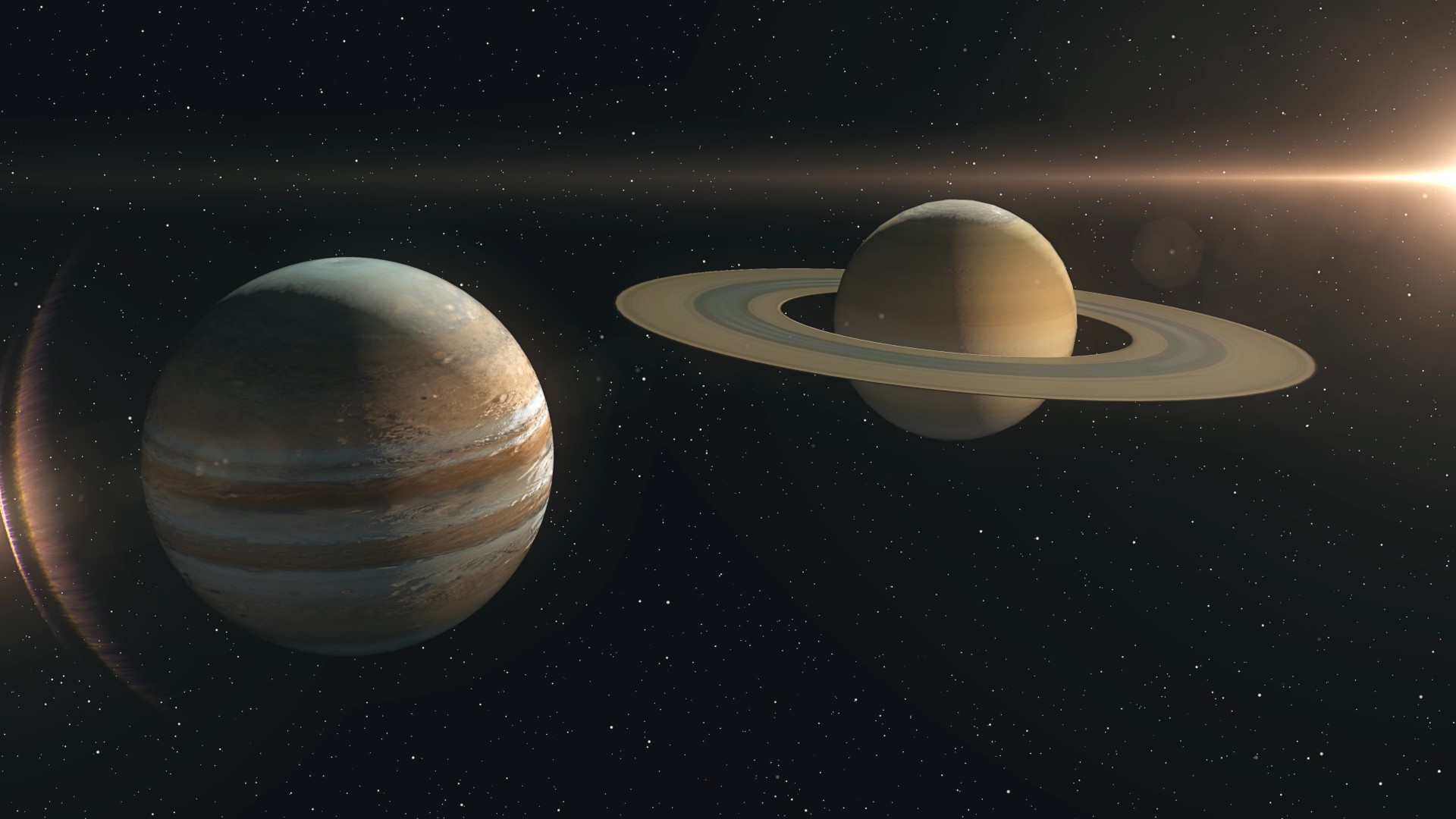Gas giants to form historic “Christmas Star” not seen in 800 years
On the night of 21 December 2020, the longest night of the year, we can witness two giant planets coming within a hair’s breadth of each other, a celestial event not seen for almost 800 years.
In what has become popularly known as the Christmas Star, Jupiter and Saturn will appear to come as close as 0.1 of a degree of each other, although they are in fact hundreds of millions of miles apart and in no danger of collision.
The last time they were this close, and visible, was in the pre-dawn sky on 4 March 1226, at the height of Genghis Khan’s Mongol Empire.
When Jupiter meets Saturn on Solstice
A conjunction occurs when two planets, or a planet and a distant celestial object, appear very close together to an observer on Earth. Dr Abel Yang from NUS Physics said, “Over the past few months, Jupiter has been moving towards Saturn while Saturn has been moving eastwards with respect to background stars. The conjunction happens when Jupiter catches up with Saturn.”
Jupiter and Saturn catch up with each other every now and then, but it is rare to see them close together because they have to line up with a third planet, Earth. It is not helped by the fact that Jupiter and Saturn are huge and move slowly, meeting only once in 20 years.
On one occasion, Jupiter zigzagged close to Saturn three times in succession, in a so-called triple conjunction spanning about half a year from 1980 to 1981. It was a visual effect caused by the Earth’s own movement around the sun relative to the two gas giants.
Other planets experience conjunctions too, but the Jupiter-Saturn pair looks the most spectacular because it involves the two largest planets in the Solar System. It is fittingly known as a “great conjunction”.
These are truly awe-inspiring planets. Jupiter is more than double the size of the other planets combined. Its Great Red Spot is a giant storm that has been raging for hundreds of years and can easily swallow Earth. Meanwhile, Saturn’s icy rings are celebrated for their beauty and complexity.
Catching the conjunction in Singapore
There is a rather narrow window of opportunity to see the Christmas Star in Singapore, in the west-southwest part of the sky just after sunset. Dr Yang, who teaches astrophysics and practical astronomy, said it is best around 8.00pm local time, when the sky is sufficiently dark.
The conjunction will be about 15 degrees above the horizon, so observers should find a dark place with a clear view of the western horizon. It will disappear below the horizon by about 9.00pm. The actual closest approach will occur at about 2.20am local time on 22 December, but by then the planets cannot be seen from Singapore any more.
The conjunction will appear as a single bright point to the casual observer, but one can see the separate planets with binoculars or a telescope. Unlike actual stars, they appear as steady points of light that do not twinkle. Jupiter is slightly brighter, while Saturn has a golden glow.
With a telescope, it may be possible to see Jupiter's largest moons Europa, Ganymede, Io and Callisto, and possibly some of Saturn's moons, especially Titan, although they will be much fainter than Jupiter's moons.
Not all is lost if it is cloudy. Dr Yang said that with a telescope, it may still be possible to see the conjunction through thin cloud that would foil the naked eye. In the worst case, one can still enjoy seeing Jupiter and Saturn being very close together in the days before and after 21 December.
At 0.1 degrees, the two planets still appear as separate objects. One might ask, does Jupiter ever pass directly in front of Saturn then? The answer is yes — the celestial powers-that-be have scheduled it for the year 7541.
But Dr Yang thinks there is no need to wait, as this one is good enough. “It’s a good opportunity to marvel at the universe beyond Earth,” he said.





